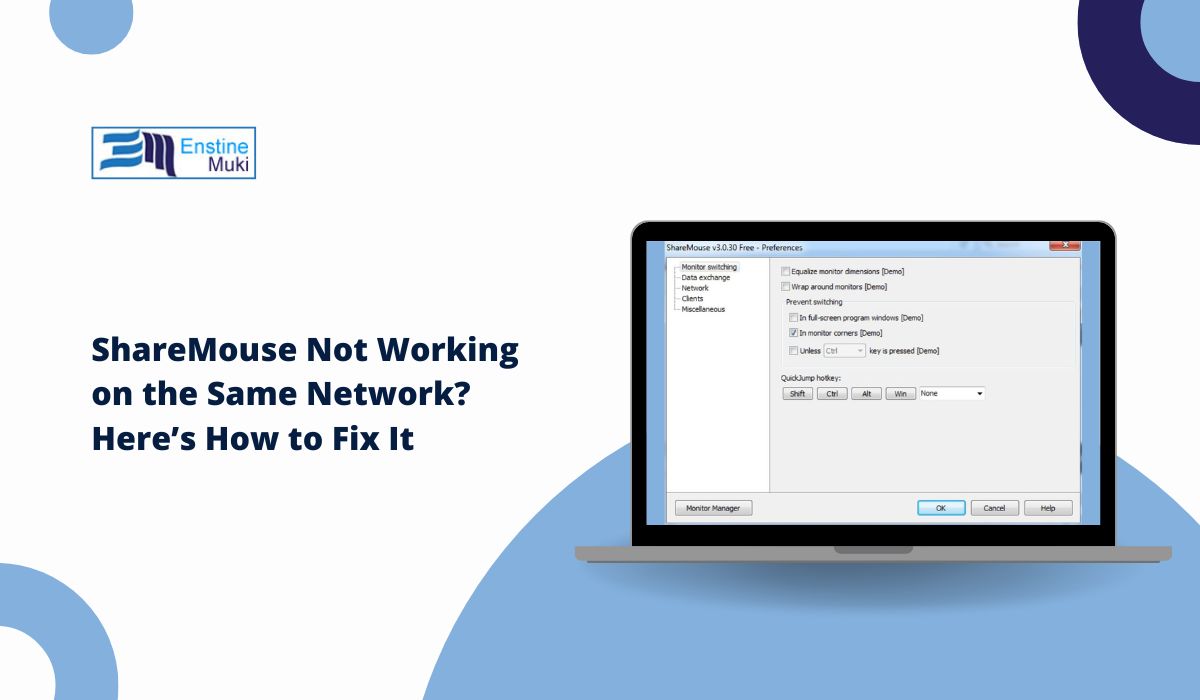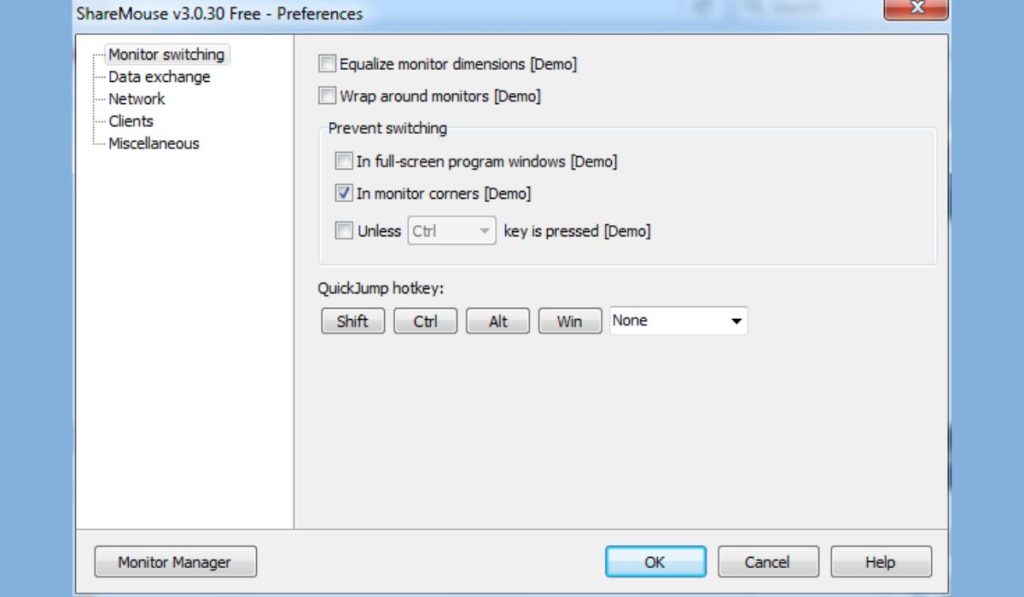ShareMouse is a simple way to control two or more computers with one keyboard and mouse. Many people use it at work or at home to cut down on clutter. But sometimes, even when both devices are on the same Wi-Fi or Ethernet, the program just won’t connect. No error message, no warning—it just doesn’t detect the other machine.
This guide explains what’s behind that issue and how to solve it using real fixes, not guesswork. Let’s go through each solution!
What Is ShareMouse?
ShareMouse is made by ShareMouse GmbH. It lets you move your mouse across multiple computers and even copy and paste between them. It works with Windows and macOS. The setup is usually plug-and-play, and no cables are required—it all runs over your network.
Instead of sending signals through a cable like a hardware KVM, ShareMouse sends them over your local network using UDP. This setup is fast and wireless, but it does depend on the health and rules of your network.
Why ShareMouse Might Stop Working on the Same Internet
Even when both computers are connected to the same router, ShareMouse might not work. That’s usually because of one or more of the following reasons:
- The two devices are connected to different subnets or Wi-Fi bands
- Multicast or broadcast traffic is being blocked by your router
- A firewall is silently blocking ShareMouse from accessing the network
- One or both devices are using a VPN or antivirus that interferes with traffic
- The app versions don’t match between machines
These issues are common with all kinds of peer-to-peer tools—not just ShareMouse. The good news? They’re all fixable.
How to Fix ShareMouse Not Working on the Same Internet
If ShareMouse isn’t detecting another computer on your network, follow these steps to fix the issue. Each one targets a specific reason that might be stopping the connection.
1. Allow ShareMouse Through Your Firewall
Firewalls can block apps even when they seem harmless. This is often the top reason ShareMouse won’t connect.
On Windows:
- Go to Settings → Windows Security → Firewall & Network Protection
- Click “Allow an app through firewall”
- Add ShareMouse for both private and public networks
On macOS:
- Go to System Settings → Network → Firewall → Options
- Click the lock, enter your password, then add ShareMouse to the allowed list
Make sure both TCP and UDP connections are permitted. ShareMouse needs UDP port 19701 to find other devices.
2. Check Your Router’s Settings
Your Wi-Fi router could be blocking device-to-device traffic.
Start by logging into your router:
- Turn off “AP Isolation” or “Client Isolation” if it’s enabled
- Check that both computers are on the same IP range, like 192.168.0.x
- Enable IGMP Snooping or multicast support if your router allows it
Some routers place devices in separate “zones” even on the same network. Disabling isolation helps them talk freely.
3. Disconnect VPNs and Proxy Apps
VPNs change your network path. Even though you’re online, your traffic might not look local. That’s a big problem for ShareMouse.
Turn off any VPN or proxy running on either computer. Then restart ShareMouse. If that fixes it, look for a VPN feature called Split Tunneling. This lets local traffic stay local while still protecting other connections.
4. Try a Manual IP Connection
When automatic discovery fails, you can connect by IP address.
- Open Command Prompt on Windows and type
ipconfig - On Mac, open Terminal and type
ifconfig - Find your local IP (it should look like 192.168.x.x)
- Go to ShareMouse settings and enter this IP under “Manual Client IP”
This method is more stable if your devices don’t switch networks often.
5. Check for Antivirus Interference
Antivirus programs are useful, but sometimes they block local apps without telling you.
Open your antivirus settings and check for a firewall or network section. Add ShareMouse to the list of trusted apps. If you’re not sure it’s the cause, turn off the antivirus temporarily, then test ShareMouse. If it works, you’ll know the problem.
Add an exception so you don’t have to turn protection off again later.
What If Nothing Works? Try These Tools
If none of the above solves the problem, consider using one of these similar tools:
- Mouse Without Borders – Made by Microsoft Garage, Windows-only, free
- Input Director – Also Windows-only, good for dual-screen setups
- Synergy – Paid software, supports Windows, Mac, and Linux
These apps work differently but offer the same features as ShareMouse. One of them might suit your setup better.
Fixes from Real Users
Online forums like Reddit and ShareMouse’s own community often share working solutions. Some users have found that guest Wi-Fi networks block peer connections by default. Others reported success after simply updating ShareMouse to the latest version.
These fixes show up again and again:
- Switch off guest Wi-Fi
- Use the same version on both machines
- Add exceptions in antivirus tools
- Restart ShareMouse after any change
Reading through forum posts or GitHub issues can save hours of trial and error.
Extra Tips for Smooth Use
Here are a few tips to make ShareMouse more reliable:
- Use Ethernet when possible—it avoids most Wi-Fi issues
- Always restart ShareMouse after changing network or firewall settings
- Keep both computers on the same network profile (Private on Windows)
- Avoid switching between networks while using ShareMouse
These small tweaks often solve big problems.
Final Thoughts
When ShareMouse doesn’t work, it’s almost always a network or security issue—not the app itself. Firewalls, routers, and other tools are doing their job, but they can get in the way. Follow the steps above to fix the problem and get back to work.
If you’ve found a fix that isn’t listed here, leave a comment. You might help someone else. And if this guide helped you, share it with anyone else having the same issue.


